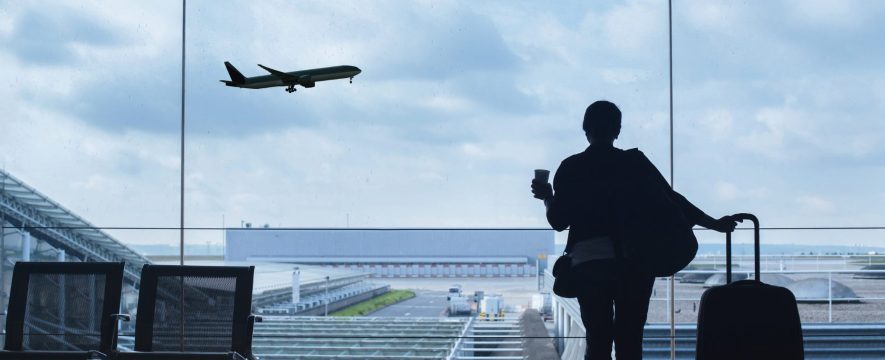Given how quickly the travel industry has been changing in recent years, monitoring customers’ preferences is a top priority for every tour operator. As the needs of travelers are evolving, both travel and tech companies need to adapt quickly to the emerging trends.
Travel trends in 2023 will be characterized by set-jetting, work from roam, travel technology, and VR taking over.
“Work from Roam”
How great would it be working in front of a fireplace, in a cozy log cabin somewhere in the Swiss Alps? Or in a Thai tree rental house, surrounded by gorgeous flora and fauna? What was once just a dream is now turning into a possibility.
All the changes happening on a global scale these past few years led to the popularization of work-from-home. At the same time, people have changed their attitude toward work. They started valuing their time more and recognized the importance of an excellent work-life balance.
The lifestyle of remote workers will become more and more nomadic now that they can work from anywhere. That’s why “Work from Roam” is now mainstream, and not even just a trend, but normalized as an alternate way of living.
According to GintuxBlog, the number of digital nomads has more than quadrupled since the pandemic began. Due to the pandemic, traditional employees turning into digital nomads increased by 96% in 2020 (from 3.2 million to 6.3 million).
This trend continued to develop; long-term stays on Airbnb increased nearly 25 percent from 2021 and nearly 90 percent from 2019.
Throughout 2023, you’ll probably hear this term even more often. No matter where you’re located, you can work as effectively and productively as if you were working in an office.
Digital nomads have created strong online communities that are growing each day. More and more people are interested in “working from roam.” They can travel the world and simultaneously build their careers, while long-term stays (28 days or more) are increasing all year around.
This is a massive shift in travel trends that the travel and hospitality industry needs to be ready for. With the increased number of people using tourism services combined with work, the tourism industry will need to digitalize its operations. Leading hotel chains and tour operators will have to change their offers to reflect this trend.
Digital nomads spend most of their time online, and that’s where modern travelers expect to find the offer. The travel industry must meet its customers where they are. Adopting travel technology will need to be prioritized – whether it’s a traveler making a reservation, a travel agency offering its services, or just the general tech needs of visitors in their trip destinations.
Set-jetting
You know that urge you get to explore Italy after watching Julia Roberts in Eat, Pray, Love? Maybe you’re one of the many that visited Dubrovnik after watching Game of Thrones or Vis because of Mamma Mia 2?
While visiting a TV or film location is hardly a new travel trend, set-jetting is now becoming increasingly popular. Expedia predicts that in 2023, media that evokes such emotions will be more influential than social media in influencing travel destinations. “Two-thirds of global travelers have considered, and 39% have booked trips to destinations after seeing them on streamed shows or movies,” they point out.
Skift singles out White Lotus, a new HBO series, as the most recent example of the media that influences viewers’ choice of destination. Many tour operators have already introduced tours inspired by The White Lotus.
To forecast the trendiest travel destinations for 2023, the experts at Planet Cruise examined the most popular movies and television shows. It is predicted that tourists will be influenced to visit countries such as California, UK, USA, and Italy, with Venice Beach, Scotland, New Jersey, London, and Tropea being the top five cities.
It’s fascinating to see the influence a film or show may have on local tourism, but make sure you stay responsible. Be mindful of preserving the locations and offer more sustainable options for your travelers.
Read more on how tour operators can be green(er) in one of our recent blogs.
Virtual Reality
How often have you been excited about visiting a place, only to be disappointed upon arrival? Well, such experiences have come to an end. How? The answer is simple – travel trend called Virtual Reality (VR).
Although most travelers still agree that virtual travel in Metaverse isn’t as fulfilling as being there in person, and some travel businesses still fear implementing unknown tech solutions, VR will reach its peak in 2023. More tourists want to explore the destination’s general ambiance and evaluate the return on their vacation investment.
Travelers are becoming increasingly excited about the “try it before you buy it” option. It is provided by numerous hotels and destinations worldwide, such as the National Museum of Chile’s virtual tour.
And while many still consider virtual tours to be nothing more than marketing, some tour operators managed to rebuild travel through the epidemic, making desirable results and profit from virtual tours. Arival brings the story of Prague City Adventures’ virtual tours that literally kept the company afloat during the harshest parts of the pandemic.
Nothing will ever replace live tours. At the same time, tour operators that provide VR sightseeing before booking a tour will benefit from it greatly since modern travelers will increasingly expect it as an option.
The Need for Tour Operators
People like personalization in a variety of modern travel industry companies. Airlines, hotels, and restaurants are adapting specialized services for consumer preferences by implementing detailed personalization.
However, creating a perfect trip requires researching different apps and searching for the best offers, which can sometimes be tiresome. That’s where the need for travel advisors arises.
Travel agents spend many hours going above and beyond for customers to create a perfect trip. They are the ones that hold the most recent and relevant information on all things travel-related.
Additionally, each location, hotel, resort, cruise line, and other business that tour operators interact with has particular connections. These trustworthy ties have developed into relationships through time and are go-to sources for receiving prompt responses to customers’ inquiries.
At the same time, the demand is rising, and creating fully personalized tours takes time. With travel technology, tour operators can adjust the needs of their customers by easily adding travel products, writing compelling descriptions, setting prices, controlling transportation, buying services from providers, and making customized itineraries.
When technology allows for high service, travelers will be even more demanding of travel agent services. It’s a win-win situation, really. Tour operators can concentrate on the crucial elements that boost business growth, and their customers are happy with their ideal vacation!
“With Lemax, we will now have a fully integrated system. Our product catalogue and all the information will now be integrated into one place and easily reachable to every team member. As a result, our teams will have more time to focus on what drives the business forward – creating new products. They will spend less time on the admin and ensuring the spreadsheets are updated. It’s a bit of automation that happens there. As a result, it’s freeing up time for our staff to do more important things.”
Nico Costerus, Head of Finance@Expat Explore Travel
To read more about the digital transformation of tour operators, head to our blog.



